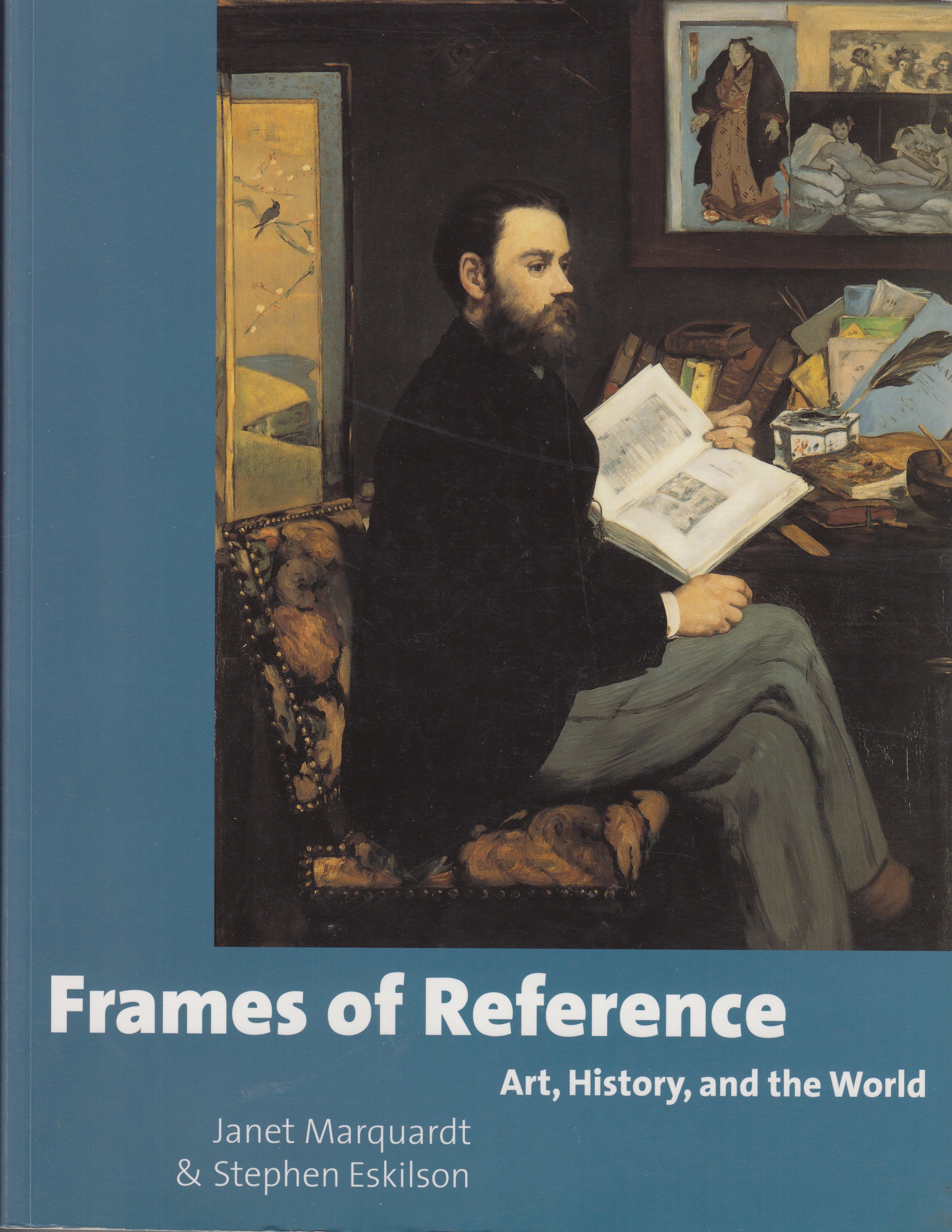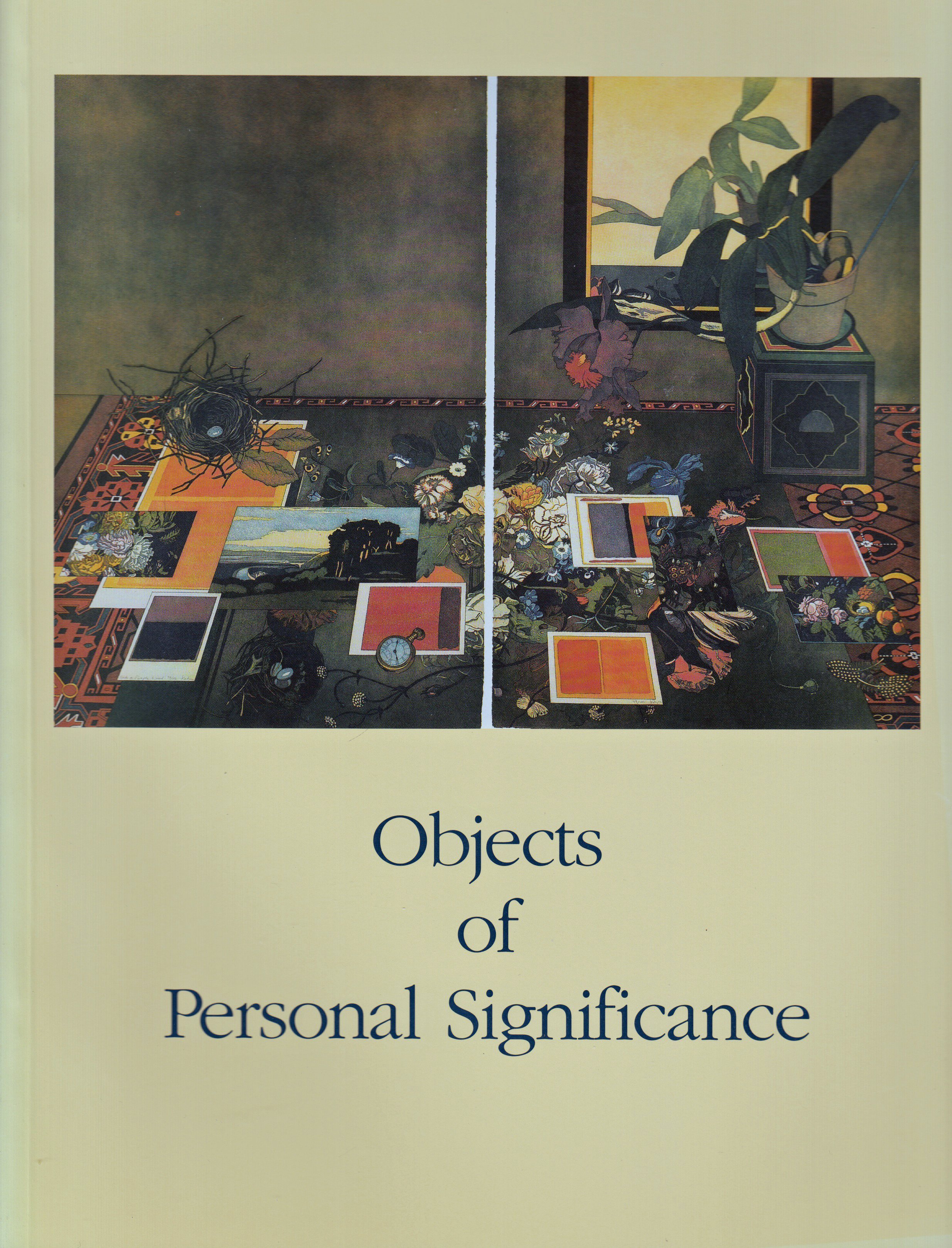Books
Zodiaque: Making Medieval Modern 1951-2001
Penn State University Press, 2015
Begun in 1951 by monks at the abbey of La Pierre-qui-Vire in Burgundy, the Zodiaque publications consisted of a triennial journal and multiple series of books, including the most famous: La Nuit des temps. The editors’ goal was to renew sacred art for twentieth-century viewers by making connections between the direct, “primitive” character of pre-Gothic religious art and an emerging modernist aesthetic. Focusing almost exclusively on Romanesque architecture and sculptural decoration, Zodiaque revived the style’s richness and variety, bringing to light monuments lost to popular currency and visually shaping their reception with a new eye to graphic forms. What captured the public imagination and brought the Zodiaque books to international attention was their primary feature: striking black-and-white photogravures. These powerful images went beyond documentary photography to become collectible graphic prints, shaping the plastic form seen by the camera into a fresh two-dimensional artwork. In Zodiaque, Janet Marquardt explores the motivations, philosophies, and workshop practices of Éditions Zodiaque and how they affected the scholarly discourse on medieval art and architecture.
Françoise Henry in Co. Mayo: The Inishkea Diaries
Edited, with introduction
Four Courts Press. 2012
French art historian Françoise Henry was one of the most important twentieth-century historians of Irish art. In 1937, she visited the island of Inishkea North (Co. Mayo) in advance of excavations in search of early medieval remains. She found cross-slabs and enough evidence to return the following year and again in 1946 and 1950. She kept technical notes on the archaeological material, but also personal journals recording her observations on the natural world, native culture around the area of Blacksod Bay and the exigencies of working on a remote island where supplies and communication were primarily conveyed by currach. In this edited translation of Henry’s journals, readers will delight in her evocative descriptions of the environment while being entertained by her awkward attempts to understand the former islanders she employed. A generous selection of her photographs has been included, many subjects of which can be found in her narrative. They serve as charming illustrations to this bygone world.
Medieval Art and Architecture after the Middle Ages
Edited with Alyce Jordan
Cambridge Scholar’s Publishing, 2009
Medieval Art and Architecture after the Middle Ages explores the endurance of and nostalgia for medieval monuments through their reception in later periods, specifically illuminating the myriad ways in which tangible and imaginary artifacts of the Middle Ages have served to articulate contemporary aspirations and anxieties. The essays in this interdisciplinary collection examine the afterlife of medieval works through their preservation, restoration, appropriation, and commodification in America, Great Britain, and across Europe from the sixteenth to the twentieth century. From the evocation of metaphors and tropes, to monumental projects of restoration and recreation—medieval visual culture has had a tremendous purchase in the construction of political, religious, and cultural practices of the Modern era. The authors assembled here engage a diverse spectrum of works, from Irish ruins and a former Florentine prison to French churches and American department stores, and an equally diverse array of media ranging from architecture and manuscripts to embroidery, monumental sculpture, and metalwork. With applications not only to the study of art and architecture, but also encompassing such varied fields as commerce, city planning, education, literature, collecting and exhibition design, this copiously illustrated anthology comprises a significant contribution to the study of medieval art and medievalism.
From Martyr to Monument: The Abbey of Cluny as Cultural Patrimony
Cambridge Scholars Publishing, 2007
After the French Revolution and the dissolution of the monastic orders, the great Abbey of Cluny in France was closed and the buildings were sold for materials. This process went on for nearly thirty years, just as a romantic appreciation of the medieval past was gaining popularity. Although the government was unable to halt most of the demolition work, one transept arm with a large and small tower was saved from ruin, along with a few small Gothic buildings and the eighteenth-century cloister. Efforts to preserve, repair, and reuse the remains waxed and waned for a century while historians wrote with regret about the abbey’s demise. In 1927, Kenneth Conant came from Harvard to excavate the site with American funding in order to prepare full-scale reconstructive drawings of the abbey. Conant’s vision of medieval Cluny entered the art-historical canon and placed Cluny at the center of debates about Romanesque architecture and sculptural decoration in Europe. This study follows the discursive history of the site while investigating the role of memory in the construction of the past and the development of the conception of heritage and patrimony in France.
Frames of Reference: Art, History, and the World
with Stephen Eskilson
McGraw-Hill, 2005
Driven by the authors' conviction that education ought to be a process of inquiry rather than submission to received wisdom, Frames of Reference develops students’ critical understanding and appreciation of art by focusing on interesting intersections among the viewpoints of patrons, artists, viewers, and critics. Thematically organized with a chronological underpinning, the text includes thought-provoking chapter topics such as "The Earth as Art," "Representations of the Gods," "Patrons and the Role of the Artist," "Utopia and Dystopia," and "Identity in Contemporary Art."
Objects of Personal Significance: Still Life by Women Artists
Traveling exhibition & catalog, Sep 1996-Dec 1998
Exhibits USA, 1996
Many women artists use the still life genre because it is well-suited to exploring the tension between intention and appearance. They often choose objects of personal significance as their subjects, rather than create still life simply as exercises to display their draftsmanship. This exhibition of work by contemporary women artists stretches the traditional definition of still life by showing contemporary paintings, photographs, assemblages, and installations whose subjects and objects hold specific meanings for the women who created them. At the same time, these works evoke universal concerns for all women and invite viewers to interpret them using their own personal iconography.
Book Chapters
‘A New Definition of Romanesque Art as a Response to Crises in Early Europe’ in Julie Hotchin and Donna Sadler, eds., Reading Communal Objects through Crises in the Premodern World (Turnhout: Brepols, 2025 forthcoming)
‘Rouergue roman: Zodiaque’s Conques,’ in Ivan Foletti and Adrien Palladino eds., Conques (801-2024): Inventions and Reinventions (Rome: Viella, 2025), 438-469.
‘Resonances in France,’ (with Elizabeth Emery) in: Joanne Parker and Nick Groom, eds., The Oxford Handbook of Victorian Medievalism (Oxford: OUP, 2020).
‘Medieval Art Collections,’ in: Conrad Rudolph, ed., A Companion to Medieval Art, 2nd ed., (Chichester: Wiley-Blackwell, 2019)
‘The Haystack Monument at Williams College,’ in: Erika Doss and Cheryl Snay, eds., Monumental Troubles (Snite Museum and MAHS, 2018), 7-15
The Lordship and Commune Project: A Collaboratory [co-editor of posthumous publication for author Barbara Abou-el-Haj] (ICMA, 2016: http://www.medievalart.org/lordship-and-commune)
‘The Politics of Burgundian Romanesque: Demolition and Construction in Cluny and Mâcon during the nineteenth century,’ in: J. M. Mancini and Keith Bresnahan, eds., Architecture and armed conflict: the politics of destruction (Abingdon: Routledge, 2015), 165-181.
‘Du martyr au monument : les reconstructions romantiques,’ in: Didier Méhu, ed., Cluny après Cluny. Constructions, reconstructions, commémorations 1790-2010 (Rennes: Presses universitaires, 2013), 199-220.
‘Celebrating the Medieval Past in Modern Cluny: How popular events helped shape collective memory for a small French town,’ in: Elma Brenner, Meredith Cohen and Mary Franklin-Brown, eds., Memory and Commemoration in Medieval Culture (Aldershot: Ashgate, 2013).
Articles and Catalog Essays
‘…we congratulate ourselves that reason has not with us yet left its seat’: First Generations of American Missionary Women in the Near East,” Women’s History Review, 11 October 2018
‘Françoise Henry,’ Grove Encyclopedia of Medieval Art and Architecture edited by Colum Hourihane (New York: Oxford University Press, 2012), vol. 3, p. 300.
‘La vision et l’approche de Kenneth John Conant,’ Histoire: antique et médiévale 30 (April 2012), 50-51.
‘The Zodiaque Collection of Books on Medieval Art/La Collection Zodiaque d’ouvrages sur l’art medieval,’ International Center for Medieval Art on-line member exhibitions, June 2010
‘Defining French ‘Romanesque’: The Zodiaque series,’ Journal of Art Historiography (Univ/Glasgow) 1, (December 2009)
‘La Pierre-qui-Vire and Zodiaque: A Monastic Pilgrimage of Medieval Dimensions’ Peregrinations II, no. 3/4, SU 2009 (http://peregrinations.kenyon.edu)
‘Recent Paintings by Sarah Lamb’ catalog essay for Spanierman Gallery exhibition (New York City) October 10 - November 15, 2008
‘Recent Paintings by Kate Lehman and Sarah Lamb,’ catalog essay for Spanierman Gallery exhibition (New York City) March 1 - April 1, 2006
‘Un Romantique à la recherche du passé: K. J. Conant à Cluny,’ Cahiers de civilisation médiévale 48 (2005), 327-340
‘First Projects: The Medieval Academy’s Support of K.J. Conant’s Cluny’ Medieval Academy website feature (2005): http://www.medievalacademy.org/medacnews/news_JanMarquardt.html
‘New Frayed Edges: Anne Wilson’ ‘Donna Sharrett’s Momentos’ and ‘Toni Hambleton: Silent Spaces’ Woman’s Art Journal 23:2 (Fall2002/Winter 2003) 50-51
‘Excavating Memory: Diane Elmeer's Recent Paintings’ and ‘Secrets: Kathleen Browne's Revealing Jewelry’ Woman's Art Journal 22:2 (Fall/Winter 2002), 56-57
‘B(l)ack Talk: African-American Women's Confrontational Art’, exposure 33: 1/2 (Winter, 2000-2001), 53-60
‘The People of Notre-Dame,’ Context pages for Columbia University web site Notre-Dame de Paris (http://www.learn.columbia.edu/notre-dame/) 1998
Nothing Overlooked: Women Paint Still Life. Exhibition catalog, Contemporary Realist Gallery, San Francisco, CA, Jan 1995
‘Katja Oxman: Working in the Tradition of the Woman Artist’ Woman's Art Journal 15/1 (Sp/Su1994), 23-27
‘Rethinking the Cultural Context of Foundations’ F.A.T.E. Journal, 16 (1993/94), 16-19
‘King David In Germany: Royal Traditions at Prüm’ Essays in Medieval Studies: Proceedings of the Illinois Medieval Association 9 (1992), 41-54
Editor, Essays in Medieval Studies: Proceedings of the Illinois Medieval Association, 7 (1990)
‘Ascension Sunday in Tropers: Innovative Scenes in the Prüm and Canterbury Tropers and Their Relationship to the Accompanying Texts,’ Proceedings of the Illinois Medieval Association, 6 (1989), 68-80
‘Ottonian Imperial Saints in the Prüm Troper,’ Manuscripta, 33 (1989), 129-136
‘Visual Reference Works for Producers’ Medieval Music-Drama News (Kalamazoo) I/1 (Wtr 1982), 5-6
‘The Original Significance of the Gunzo Legend at Cluny’ Comitatus (UCLA) 9 (1978), 55-62
Book Reviews
Stephanie Glaser, ed., The Idea of the Gothic Cathedral: Interdisciplinary Perspectives on the Meanings of the Medieval Edifice in the Modern Period (Brepols, 2018) in: Speculum 94/4 (2019), 1156-1157.
Michael Greenhalgh, Destruction of Cultural Heritage in 19th-century France: Old Stones versus Modern Identities (Brill, 2015) H-France Review Vol. 16 (2016), #172 [http://www.h-france.net/vol16reviews/vol16no172marquardt.pdf]
Astrid Swenson, The Rise of Heritage: Preserving the Past in France, Germany and England, 1789–1914 (Cambridge University Press, 2014). H-France Review Vol. 15 (2015), # 63 [http://www.h-france.net/vol15reviews/vol15no63marquardt.pdf]
Stephen C. Pinson, Speculating Daguerre (University of Chicago Press, 2012) in: H-France Reviews Vol 14 (2014), #172 [https://www.h-france.net/vol14reviews/vol14no172marquardt.pdf]
Nina L. Dubin, Futures and Ruins: Eighteenth-century Paris and the Art of Hubert Robert (Getty Research Institute, 2010) in: H-France Review Vol. 11 (2011), #160 [http://www.h-france.net/vol11reviews/vol11no160Marquardt.pdf]
Sherry C. M. Lindquist, Agency, Visuality and Society at the Chartreuse de Champmol (Aldershot, England and Burlington, VT: Ashgate, 2008) in: H-France Review Vol. 9 (2009), #50 [http://www.h-france.net/vol9reviews/vol9no50marquardt.pdf]
Eleanor Heartney, Helaine Posner, Nancy Princenthal, and Sue Scott, After the Revolution: Women Who Transformed Contemporary Art (Prestel, 2007) in: Women’s Art Journal, Fall/Winter 2008
Jean Nayrolles, L'invention de l'art roman à l'époque moderne (XVIIIe-XIXe siècles), Collection ‘Art & Société,’ (Presses universitaires de Rennes, 2005) in: College Art Association book reviews (http://www.caareviews.org/reviews/897#.XB06FC2ZPUI), 2006





